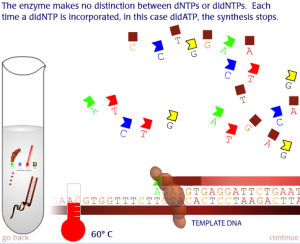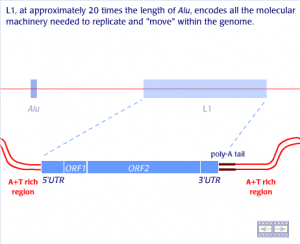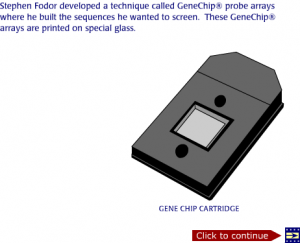Description
A very detailed animation showing the working of the kidney and the nephron and the mechanism of action of various diuretics. It is a long 8 minute 47 second animation showing the molecular mechanism of the working of the nephron and the drugs which act on the various different regions of the nephron. It shows the detailed mechanism of action of the diuretics such as the loop diuretics, the potassium sparing diuretics, and the thiazide diuretics.
This video is uploaded by URIanimation
Transcript:
“As everyone knows we have two kidneys, each functioning independantly. Diuretic action occurs in the kidney. This is where the body controls filtration, reabsorption and excretion of water, small molecules and ions such as sodium and potassium. The outer layer of the kidney is called the cortex. The inner layer is the medula. This is where we have millions of special structures called nephrons. We will now zoom in to a single nephron.
Filtration and Excretion in the Nephron
The nephron is a tubular structure similar to a porous pipe or hose. The glomerulus serves as a starting point for the flow through the nephron. First, the blood enters the glomerulus through the afferent arteriole, the blood exits the glomerulus through the efferent arteriole. The glomerulus is where the blood supply is filtered by osmosis and diffusion. As blood passes through the porous capillary loops water and small molecules, smaller than about 50,000 molecular weight, are filtered passing into the bowman’s space. This creates the luminal fluid flowing through the nephron tubule. About 1/5th the total blood volume is continuosly filtered through the bowman’s capsule. About 99% of this volume is reabsorbed leaving only a small volume to be excreted as urine.
Each section of the nephron has a different morphology of cells making up the single cell walls which causes differences in water permeability and ion transport.
The first section of the nephron is called the proximal convoluted tubule. The proximal convoluted tubule is highly permeable and about 65% of the filtered sodium and water leak out to be reabsorbed into the near by capillaries. Old diuretics called Carbonic Anhydrase Inhibitors mostly act on this portion of the nephron.
The proximal convoluted tubule leads into the Loop of Henle, which has a thin descending limb and a thin and thick ascending limb. The thick ascending limb normally reabsorbs about 25% of the filtered sodium but does not allow water to reabsorb. The loop diuretics act here by blocking sodium/potassium/chloride (Na+/K+/Cl-) ion co-transporters on the luminal membrane.
The next section is called the distal convoluted tubule. This section does not allow the water to reabsorb, but reabsorbs sodium through the sodium/chloride (Na+/Cl-) ion co-transporters. The thiazide diuretics act here on this transporter.
The last section of the nephron is called the collecting tubule. Sodium channel blockers and Aldosterone II antagonist diuretics act here.
Reabsorption of Molecules
At each site of the nephron tubule, certain molecules are able to permeate the wall and leak out into the interstitium. These molecules would be reabsorbed into the para-tubular capillary and be returned to the systemic blood supply.
Zoom Inside the Tubule
Now, we will zoom inside the tubule and show the molecular details of reabsorption. This is a single layer of cells making up the tubule wall. Ions and water molecules flow through the tubule.
Loop of Henle and Loop Diuretics
This image shows the single cell layer making up the wall of the ascending limb of the nephron. This sodium reabsorption is driven by the sodium/potassium/ATPase transporter (3Na+/2K+ ATPase) on the anti-luminal membrane. For ever three sodium ions moving out of the cell to the interstitium, two potassium ions move from the interstitium to the inside of the cell. This causes a deficit of the sodium within the cell. This deficit is made up by the sodium/potassium/chloride co-transporter (Na+/K+/2Cl- Co-Transporter) on the luminal membrane of the cell. This transporter moves, one sodium, one potassium and two chloride ions from the lumen into the wall of the nephron. The potassium and chloride ions move down the concentration gradients through their respective channels. The potassium returns to the lumen through the potassium channel. The chloride is removed to the interstitium through the chloride channel. The net result is the continuing transport of three sodium ions and 6 chloride ions from the luminal fluid into the interstitium. This sodium is reabsorbed into the circulation. Because of the secretion of potassium, a positive voltage is generated in the lumen, resulting in reabsorption of positively charged ions (calcium and magnesium) through the paracellular junction.
Loop Diuretics
When the Na+/K+/2Cl- Co-Transporter is blocked by the loop diuretics, the sodium-potassium exchange begins, but the sodium deficit cannot be replaced by the sodium from the lumen. This blocks the overall reabsorption of sodium from this side of the nephron. The net result is greater excretion of sodium, chloride, potassium, calcium and magnesium in the presence of the loop diuretics.
The next site for diuretic action is the distal convoluted tubule. This is where the thiazide diuretics act.
Distal Convoluted Tubules and Thiazide Diuretics
The transporters present in the distal convoluted tubule are slightly different than those described in the ascending limb. In the distal convoluted tubule the sodium/chloride co-transporter(3Na+/3Cl- co-transporter) replaces the sodium deficit caused by the 3Na+/2K+ ATPase. The chloride is reabsorbed through chloride channels and the potassium returns to the interstitium in a potassium channel. This sequence results in overall sodium and chloride reabsorption.
Thiazide Diuretics block Na+/Cl- Co-Transporter
However, the thiazide diuretics bind at the chloride binding site and block the Na+/Cl- Co-Transporter. This blocks sodium and chloride reabsorption resulting in net excretion of sodium and chloride.
The last site for diuretic action is the connecting and collecting tubules. This is where the sodium channel inhibitors act.
Collecting Tubule and Sodium Channel Inhibitors
Again the transporters present in the collecting tubule are slightly different than at the other sites of the nephron. At this site the same sodium/potassium exchange occurs on the anti-luminal membrane. However, the sodium is replaced at this site through the sodium channels on the luminal membrane and potassium excretion is completed by the transport through potassium channels on the luminal membrane. This continuing exchange results in overall sodium reabsorption and potassium excretion.
Sodium Channel Inhibitors
When the sodium channel inhibitors are present they block the sodium channel. This prevents the continuing reabsorption of sodium and also prevents the overall excretion of potassium. This is why sodium channel inhibitors are called potassium sparing.
Thus all the diuretic agents described directly decrease the reabsorption of sodium by blocking specific ion transporters in the various segments of the nephron tubule. This indirectly affects reabsorption and excretion of water and other ions as described for each type of diuretic. “




sir this animation is very good sir plz sent this animation to my mail sir plz padmaedulla@gmail.com
Hi Padma. We are happy that this animation has helped you but we cannot send you this animation. The animation will remain online so that you can view it at any time.